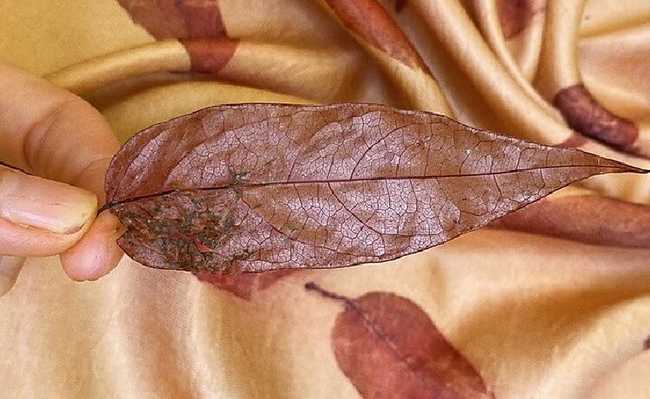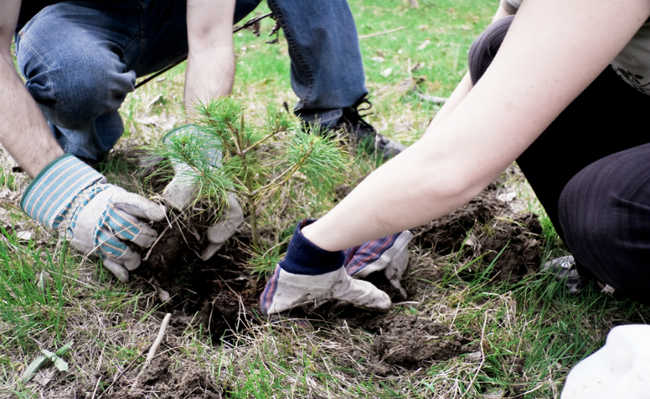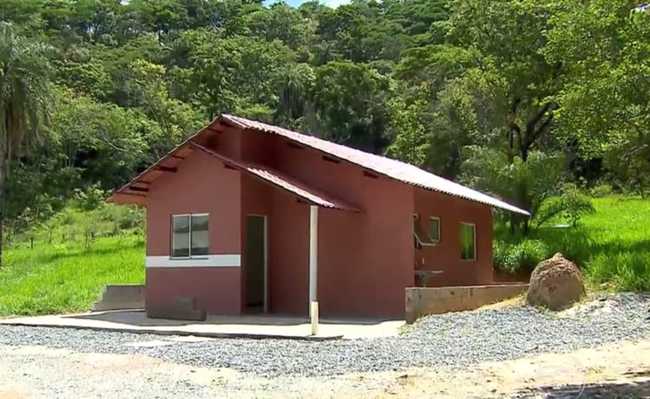Guide: how is composting done?
Composting can be done at home very conveniently

Knowing how compost is made is an increasingly frequent quest. This is because people are becoming aware of the importance of having a compost bin at home: significantly reducing the waste destined for landfills and dumps. The National Solid Waste Policy (PNRS) provides for some important goals to minimize environmental, social and economic problems caused by inadequate management of organic waste. The closing of dumps and the construction or modernization of landfills are measures taken by the State that can improve the relationship between Brazilians and their garbage. However, some habit changes are also important contributions to the environment.
- Do you know the difference between waste and tailings?
- What is organic waste and how to recycle it at home
When garbage is disposed of incorrectly and is left in the open, groundwater contamination with leachate can occur, emission of greenhouse gases (which cause its imbalance, such as methane gas (CH4 - 20 times more harmful in the atmosphere than CO2) and also attracts insects and animals, which can transmit diseases to people. A large portion of the volume of waste produced annually in the country is organic waste, which could have a much more correct destination than a dump.
- Carbon Dioxide: What is CO2?
There are several solutions to this problem, making composting at home is one of them. This method makes it possible to reuse organic waste inside the home, where it can be treated to produce fertilizer. Leaving organic waste at home is still taboo for many people, as we've learned that everything we don't need or don't want should be thrown away. However, there is no "outside". All the waste produced continues on the planet causing impacts. On the other hand, when composting is done, there is a significant reduction in the environmental impacts of daily consumption, reducing the volume of waste sent to dumps and landfills (see how to reduce all types of household waste). Check out how composting is done below:
Vermicomposting (worm farm)

Procedure
In vermicomposting or earthworms, the composting process is carried out by microorganisms present in the soil and accelerated by earthworms, which crush the residues, facilitating the humus production process.
This population of earthworms can increase over time (the initial amount is 200 to 250), but generally, depending on space and food availability, they do the control themselves. Some people may be disgusted or fearful about having so many worms in the house, but they don't come out of the boxes, they don't smell and they don't transmit disease. You also don't need to go around looking for worms. There are products on the market that come ready to use, including red Californian earthworms, which are better suited for this purpose.
- Vermicomposting: what it is and how it works
- Humus: what it is and what are its functions for the soil
- Minhocarium: what it is for and how it works
- Earthworm: environmental importance in nature and at home
This composting system consists of a lid, three or more stackable boxes of opaque plastic (the amount depends on family demand, as well as the size of the containers), with the two upper digester boxes, with holes in the bottom, these holes are exclusively for the migration of earthworms and liquid flows and a collection box to store the slurry produced in the process (it is the one that forms the base of the composter). If the slurry is not drained off, occasionally fluids will accumulate to make the composting system anaerobic. Calm! This residue is not that harmful to the environment and produced in dumps. Organic or biological manure is a liquid biofertilizer, rich in nutrients and mineral salts. Just dilute it in water, in a proportion of 1/10, and water the plants.
This slurry can also be used as a natural pest repellent. To do this, just dilute it in water in a proportion of 1/2 and sprinkle it on the plants when the sun is low or at night. In dumps, the origin of the leachate is diverse, including heavy metals, which is why it is an ecosystem contaminant.
- Composter: what it is, how it works and its benefits
- Learn how to make natural insecticide and pest control in the garden
Maintenance
Assuming you purchased a three-box compost bin, the bottom one will accumulate the bioslurry and the middle and top one will be the digesters. It is in the first compartment from above that the worms will be placed; forming a bed of humus of about three fingers.
From then on, put a small amount of organic waste (know what you can put in the compost bin) in the upper digester box. It is recommended to feed the composter every day, so that the compost is done continuously. The first time, deposit approximately half a glass (100 mL) and increase 50 mL every fifteen days until reaching the amount of 1 liter per day. The first residues should not be spread around the box, just concentrate them in one part and cover with twice the volume of dry material (virgin wood sawdust, straw, dry leaves, dry grass) for the worms to start work.
This mixture of organic material (rich in carbon) with the dry material (rich in nitrogen) is important for composting, as it maintains the pH of the system, in addition to allowing good ventilation of the mixture and controlling humidity. If there is good aeration, the decomposition process will be faster and the humus produced will have better quality.
- Understand the nitrogen cycle
- Nitrogen oxides: what are NOx and its impacts
Over time, the digester box (top) will fill with humus. From then on, it is necessary to change the middle and top boxes, gluing the middle one to the top. But to ensure that the compost is done in the best possible way, it is necessary to retrieve the humus (with worms) from the bottom of the filled box and add it to the empty box; forming a bed of worms about three fingers high.
Tips
Excess water is one of the most harmful factors that prevent composting from taking place, as earthworms have difficulty moving around (because the compost becomes more slippery), in addition to affecting the aeration of the system. Do a simple test: squeeze the mixture and check for liquid dripping. If this happens, add more dry material, preferably sawdust, and stir the mixture to solve this problem.
Pay attention when you put fruits in the digester box, such as banana and papaya peels. They are responsible, depending on the humidity regulation of their set of boxes, for the eventual appearance of fruit flies, of the species Drosophila. They are harmless, but the problem is the nuisance that the large number of them causes. Waste such as fruit peels can contain fly eggs that hatch when introduced into the mixture. Do not use any type of poison to scare away these insects as they can affect the worms. Regulate the humidity. If that doesn't work, make a concentrated lemongrass tea and sprinkle into the mixture.
- Fly and larva in compost: causes and how to eliminate
- Problem with composter? Discover solutions
- What are the benefits of eating fruit?
It can also happen that some earthworms fall into the slurry collection box and drown after a while, because they have no way to get back to the digestion box. Placing a small piece of brick against the walls of the box can solve the problem by serving as a ladder. If your composter is the Humi model, you won't need to make this worm "ladder", since this model already comes with an adaptation for earthworms.
- Humi: the domestic composter that combines style and practicality
It is important not to leave the vermicomposter exposed to the sun and rain. Water and heat in the system can cause the mixture to ferment, which will eventually give off a bad smell. If this happens, remove the lid for a while, stir the contents, add a little more dry material and do not add new residue for two days.
earthworms
Earthworms also need some attention. Respect their diet and their limitations. Food scraps are generally well accepted, but avoid citrus peels, animal fat, salty food scraps, barbecue ash, garlic, pepper, strong herbs, onions, pet feces, meat of any kind, dairy products ( in excess), toilet paper and wood treated with pesticides or varnish (not even as dry material). The presence of these residues slows down the process, causing problems with pests and even the death of worms (know what to do with what does not go to the composter).
Leftovers of cooked food, coffee grounds (in small quantities), yerba mate, tea bags, fruits, vegetables, grains, seeds and eggshell can be placed in the digester box. It is recommended to chop these materials to facilitate and accelerate the action of the worms. Brown paper and cardboard are also welcome, but not overly so. Magazine and newspaper pages (especially color pages) are treated with chlorine and have a lot of ink, so it is not advisable to put them in the compost bin. Know what to do with waste that doesn't go into the compost bin.Humus
A medium digester box (50cm x 35cm x 65cm), suitable for two people, can receive about 1 liter of organic waste per day and should be completely full in a month (as there are different sizes according to family demand, this time can vary by product model). After this period, remove the humus from the middle box (see below) and change position (the top goes to the middle and the middle goes to the top). In this way, the process will continue to be carried out while the other collection box will receive the next residues. The worms will migrate through the holes in the bottom of the compartment to this container, after feeding on all the organic material that had been deposited. In approximately two months, you will have produced earthworm humus in your home, in addition to having recycled all your organic waste.
The removal of the humus needs to be careful not to harm the worms. When you see that all the food deposited in the box has turned into a homogeneous dark brown wet earth, leave the box exposed to the sun. That way the worms will escape the light and migrate to the bottom, that's why the boxes need to be opaque plastic. This move takes a few minutes. Then scrape off the humus with a shovel. If you find more worms, leave the light a little longer and resume the removal. Don't forget to leave about three fingers of humus in the bottom so that the box receives new residues and also the worms.
- Humus: what it is and what are its functions for the soil
dry compost

This method has numerous management options. His secret is how you will use to aerate the mixture. The production of fertilizer takes a little longer, because only the microorganisms present in the soil, fungi and bacteria, will be responsible for the decomposition of organic matter. That's why it's important to keep the moisture and heat of the mixture under control.
Procedure
It is possible to compost dry in a specific container or on the ground itself. The standard process is basically to put one portion of organic material, rich in carbon, into two portions of dry material (straw, dry leaves, virgin wood sawdust, dry grass), rich in nitrogen, then mix well to aerate and facilitate the action of microorganisms. There are products on the market with a good capacity for processing waste, in this case there will be some mechanism to turn this mixture. These models are best suited for use in a residential environment.
If you choose to dry compost over the ground itself, a little more attention is needed. Make a hole about 40 cm deep and 60 cm in diameter, at the bottom place dry branches or straw to allow air circulation. Or make a pile of garbage and dry material approximately two meters in diameter by one meter high. In both methods, it is necessary to maintain the proportion of one part of organic waste to two of dry material, turning the mixture over with each addition of garbage. When the system reaches its volume limit, let it rest for about two months, after this period you will have produced in your home an organic fertilizer of excellent quality.
Care and tips in dry composting
In dry composting, it is essential to stir the content frequently to oxygenate the mixture, favor the evaporation of excess moisture and increase the amount of air. For the first week it is recommended that you stir the mixture well every day, then once a month. The amount of moisture, heat and air in the system needs to be controlled as microorganisms are sensitive to these variations and compost can be affected, but don't be concerned. There are a few tricks to see if it's all right.
Simply squeeze a little of the content by hand to assess the moisture. If everything is fine, the palm of your hand should be gently wet. If water drips, this indicates excess moisture in the mixture, which is harmful to the proliferation and action of microorganisms. Just turn the mixture and add a little more dry material to solve the problem. When it is very dry, just sprinkle a little water and stir.
In the case of temperature, an iron bar stuck in the mixture can work as a thermometer. An efficient system has a temperature around 60°C. This heat is a result of the aerobic decomposition of organic matter that is transmitted to the bar. If the temperature is much lower than that, it will indicate that the process is too slow. This can be caused by low humidity or little organic residue. Do the moisture test. If this is not the deficiency, the system possibly has little organic material. Add more residue and stir to solve the problem.
The appearance of pests is related to the presence of some food that is not easily decomposed and that tends to attract insects or animals, such as meat, bones, fat and sugar (which occurs a lot in outdoor composting, unlike the models of composters available for sale - in the latter, such risks tend not to exist). Just remove these residues, stop placing more garbage for three days and add more dry material. That way the problem will be solved.
Humus
In dry composting, the humus will be ready in between two and three months, depending on the size of the composter. After this period, the compost results will be a brown, odorless and homogeneous residue. In this case, there is no collection of leachate.
- Humus: what it is and what are its functions for the soil
Efficiency
Both methods for home composting are efficient and eco-friendly. They contribute to the reduction of methane gas emissions to the atmosphere, avoiding imbalance caused by the greenhouse effect. Not to mention that, if they are treated correctly, they produce good quality fertilizer, do not emit a smell, take up little space, do not attract insects and animals, in addition to substantially reducing the volume of household waste. With little effort it is possible to give a correct destination to what would pollute the ecosystem and overload urban dumps and landfills. The fertilizer produced can still be an incentive to have an organic garden. If you don't want to plant or fertilize any plant in your home, just apply the humus to any tree in a square, park or on the street bed to do good for nature.










